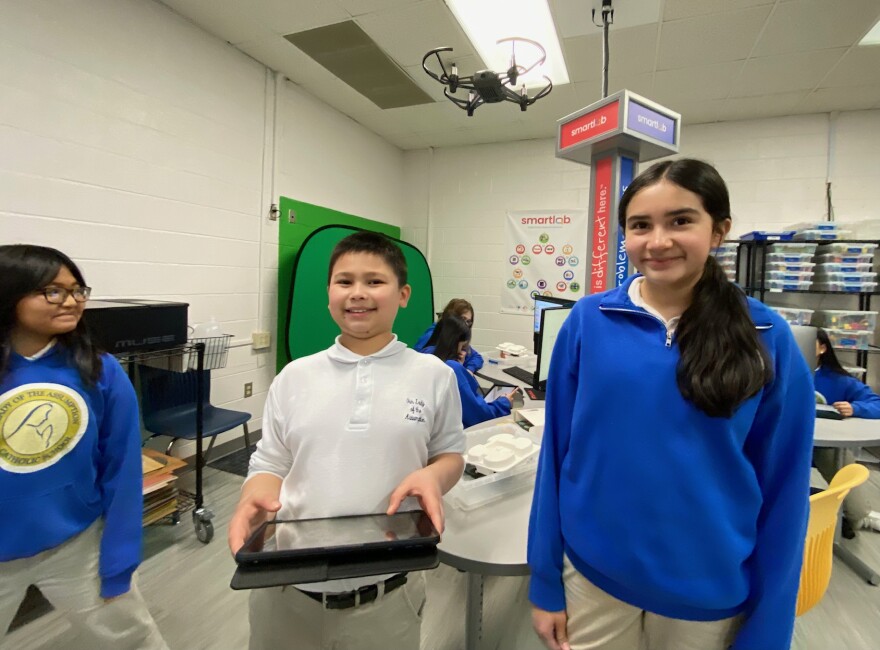North Carolina’s Opportunity Scholarship program delivered good news to some families and bad news to many others this weekend.
After lifting the income cap and increasing the size of the scholarships, the state saw a surge of demand. Roughly 72,000 students for 2024-25. The scholarships provide state money to defray the cost of private-school tuition.
The notified 13,511 students whose families earn the least that they’re eligible if they attend a participating school next year. Their families have until April 19 to accept or decline.
The authority also announced this weekend that even with almost $192 million allotted, that won’t be enough to offer scholarships to about 40,000 students whose families are in the top income brackets.
That sets up an election-year battle over the voucher program. Republican leaders have promoted the expanded program as a chance to increase options and let all taxpayers take their child’s share of education money — sometimes dubbed “backpack funding” — to whatever school they choose.
The budget approved in 2023 includes annual increases, reaching more than $500 million by 2031. The GOP holds a veto-proof majority and could use the 2024 short session, which convenes later this month, to add money for the coming year.
Mike Long, president of the school-choice advocacy group , said state legislators have told him they’ll consider doing so.
“Our legislature is saying that we need real education reform in this state, which means we need the dollars to fund the child, not the system,” Long said on Monday. “Parents know best where their children need to be.”
The co-chairs of the Joint Legislative Education Oversight Committee — Sen. Michael Lee and Reps. Tricia Cotham and Hugh Blackwell, all Republicans — could not be immediately reached for comment Monday.
Many Democrats oppose expanding the program to offer public money to even the wealthiest families. Democratic Gov. Roy Cooper has been touring the state saying the expansion of Opportunity Scholarships drains money from public schools and demands little accountability from the private schools receiving taxpayer funds.
It’s unclear how this might play out for the long-term spending plan, but Long says strong demand for vouchers will shape the budgets.
“It’s going to keep rolling. It’s snowballing right now because parents agree with it,” he said.
Long said polls show strong support for school choice in North Carolina. “It’s not Republican-Democrat. It’s about their children,” he said.
For instance, of likely voters, conducted by the conservative John Locke Foundation, found more than three-quarters say parents should control where their children go to school and 64% support the Opportunity Scholarship program.
Income-based priorities
The program divides applicants into four tiers based on income. The students who got the first round of offers are in Tier 1. They qualify for federal school lunch subsidies, which are based on income and family size. The cutoff is $57,720 for a family of four. Tier 1 students also get the largest possible scholarship: Up to $7,468 for the year.
In addition to the new Tier 1 scholarship students, current scholarship students will continue getting vouchers as long as they remain in eligible schools. North Carolina currently has about 32,500 students participating.
Families in the next tier — those making up to $115,440 a year — are in limbo for now. They’ll find out in May whether their kids will get scholarships, which would top out at $6,722. Almost 19,000 students in Tier 2 applied, and if there’s not enough money for all of them the state will conduct a lottery.
Families in Tier 3 and Tier 4 are eligible for scholarships of $4,480 and $3,360 — but only if there’s money left after the lower tiers get their vouchers.
“There are not sufficient funds available to offer students in Tiers 3 and 4 an award. If additional funds become available, NCSEAA will notify families as soon as possible,” the authority said in a Saturday news release.

Mission is shifting
The Opportunity Scholarship program began in 2014. At the time it was touted as giving low- to moderate-income families an alternative to weak public schools. Affluent families didn’t qualify and recipients had to be young children starting in private schools or older students leaving public schools.
In 2014-15, when the scholarships debuted, the income cap was $43,500 for a family of four, the maximum scholarship was $4,200 a year and about 1,200 students participated.
This year the income cap is about $110,000, the maximum award is not quite $6,500 and 32,511 students are getting vouchers. That includes 2,145 in Mecklenburg County, getting a total of $13.1 million. That’s second only to Cumberland County, where 2,563 students receive $15.2 million.
Despite the steady growth in awards and participation, the coming year will be the first time the money that’s budgeted has run short of demand.
The passed last summer not only lifted the income cap starting in August, but opened the program to students whose families have already enrolled them in private schools without the assistance.
Long said lawmakers have told him they’re interested in increasing spending to meet the demand, and also may look at revising the process for distributing it. For instance, he said, if there’s only enough money to fund part of Tier 2, the recipients will be chosen by lottery. That means a student near the top of that level — a family of four making about $115,000 a year — could edge out one whose family makes less. A family of four making $58,000 a year would be at the bottom of the Tier 2 range.
Long said he and some lawmakers would rather see the lowest-earning families get first priority, even within a tier.
North Carolina currently has at least 127,000 students enrolled in private schools. However, . As of late March, the scholarship authority said 618 out of almost 900 private schools had signed up. That process continues through June for 2024-25.






